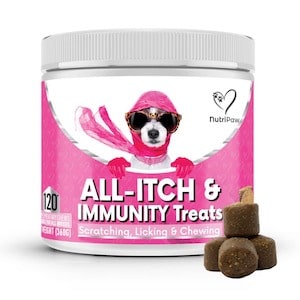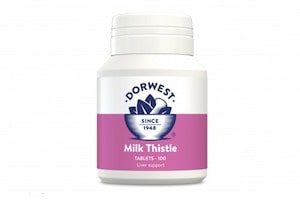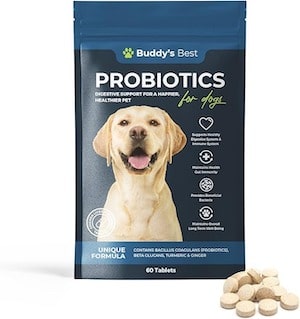If your dog suffers from allergies, you may have heard of loratadine, a common over-the-counter medication for humans. But can you give loratadine to your dog? And if so, how much and how often?
In this article, we will answer these questions and more, as we explore the use, dosage, and side effects of loratadine for dogs.

Key Takeaways
- Loratadine is an antihistamine drug that can help dogs with allergies by blocking the histamine receptors and reducing the allergic symptoms.
- Loratadine should be given to dogs only under the vet’s supervision, as it can cause toxicity, drug interactions, and liver problems in some cases.
- The dosage of loratadine for dogs depends on their weight, health condition, and the severity of their allergies.
You Might Also Like:
Can You Give Your Dog Loratadine?
Definitely, Loratadine is safe for your little pup but in appropriate quantity. It is well tolerated in these pooches but, it is advisable that medications should be given under the supervision of a veterinarian. It is a great drug for humans, and it has shown noticeable effects on dogs too, but the dosage may differ.
Likewise, it comes handy when your dog gets allergic reactions from certain things like new food that you have introduced, any detergent that is used to clean their bedding or any clothing material that is not suitable for his skin.
Loratadine mainly works by treating the allergic symptoms like itching and inflammation. When any foreign substance enters the body, there is a release of inflammatory cells called mast cells, which are responsible to secrete histamine.
Histamine binds to H₁ receptor and causes symptoms such as redness, itching and other inflammatory responses. Loratadine is an active compound in Claritin that prevents the binding of histamine to H₁ receptor, and thus treats the allergy.[1]
When you give your dog Loratadine, it can ease the allergy signs that arise from any foreign particle or bee biting like if your dog has recently come in contact with pesticide or while roaming outside they might have eaten pollen grains from flowers or certain bushes. [2]

One thing you should keep in mind is that there are many formulations of Claritin available in the market and some of them can show toxicity, so it is advisable to always check if the active ingredient present is Loratadine.
Also, there are few drugs like Claritin-D available in the market which should be avoided as they have pseudoephedrine in them, and that compound can cause fatalities in dogs.
Side Effects of Loratadine
Every medication has their side effects and any increase in dosage will result in toxicity. A safe dose for Loratadine ranges between 0.5-1 mg for each 2.2 pounds (1 kg) that a dog can weigh.
The most common adverse effects of loratadine are lethargy, dry mouth, possible diarrhoea, decreased tear production, sedation, and vomiting. Although, It is normal for your dog to experience dryness of the mouth, increased heart rate, and changes in bowels.
This drug is also responsible to cause certain behavioural changes in dogs. But, Loratadine is usually well tolerated by dogs because it does not produce huge side effects like the older antihistamines can, especially drowsiness.

Unlike other anti-histamines, Loratadine is unable to cross the blood brain barrier. As a result, drowsiness will not occur. In fact, these side effects are not lethal, so you don’t have to worry and wonder more about Can Your Dog Have Loratadine?
Precautions for Loratadine
It is better to take precautions when you give drugs to your pet.
- Never increase the dose of Loratadine for your dog.
- Avoid mixing Loratadine with other drugs.
- Look out for adverse effects even if you have already given this drug before.
- If your dog is already suffering from liver failure or any other disease, then Loratadine is not advisable.
- Mostly, Loratadine tablet is preferable and other dosage forms are avoided.
- You should contact your vet before providing any medicines and discuss the possible results and side effects.
- You should always stay aware about the healthy alternatives for your dog.

FAQs
How much Loratadine should you give to a Dog?
Approximately 0.2 milligrams dosage of Loratadine per pound of body weight is given every 12–24 hours. But, the doses can vary, so it is advisable to consult a vet first. Normal dose of Claritin available in the market is 10 mg per tablet, so you should be careful as overdose and toxicity may occur.
Can I give my dog Loratadine and Benadryl?
It is not advisable to give your little pup, Loratadine and Benadryl at the same time. You should consult a vet before giving any medications to your dog.
What happens if my dog eats Loratadine?
If you found out that your pet has accidentally ingested Loratadine, then your dog might get anti-histamine poisoning and suffer from signs like severe lethargy, sedation, abnormal heart rate, abnormal blood pressure, agitation, vomiting, diarrhoea, inappetence, seizures, aggression, respiratory depression, and even death.
Is Loratadine the safest antihistamine?
Yes, Loratadine is safe for minor allergies but, it is harmful for people with worse liver conditions. Liver is responsible for breaking the enzymes, and it allows Loratadine to show effects inside the body. As the liver is not working, this process will not occur, and accumulation of this drug may cause toxicity.
Final thoughts
Thus, you might have understood that Loratadine is a safe anti-histamine drug for dogs if provided in specific quantity. There are rare cases when you’ll see the adverse effects of this drug and also this drug may show drug interaction with other drugs, so it is preferable to not combine this medicine with any other medicine.
Loratadine should be given after consulting a vet, and there are certain precautions that you should take to avoid the dangers that arise due to this drug.
References:
- Loratadine (Claritin). (n.d.).
- Higgs, V., DVM. (2023). Pesticide Poisoning in Dogs. PetMD.






